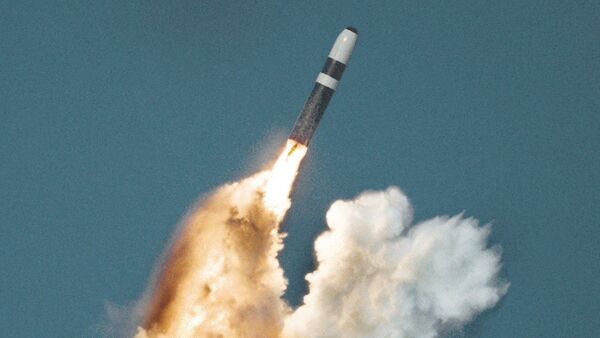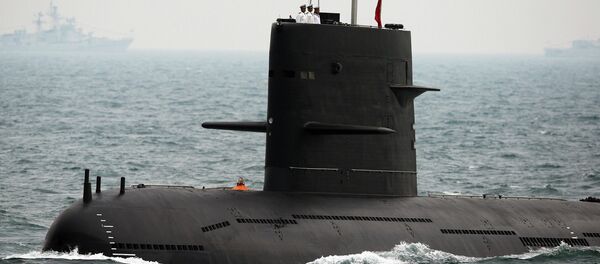The US Navy is developing a hypersonic weapon able to launch from underwater to be used in a Prompt Global Strike program, according to US Navy Vice Admiral Johnny Wolfe.
The weapon is being developed within US Navy's Strategic Systems Program (SSP), which is normally tasked with developing nuclear weapons.
Speaking at the annual Naval Submarine League symposium earlier this month, Wolfe explained that the US seeks the goal of being able to hit any target around the globe at any given moment within a time span of one hour. To do so, they need a hypersonic weapon with a booster that can be launched from any platform.
"From a Navy perspective, we're developing the booster that our hypersonic glide body will go on, and we're doing it though in such a way that we're taking the most stringent requirement — which is underwater launch — and so as we develop it we will do it in such a way that as the bigger Navy comes through what platform or platforms they actually want to deploy this on, the launcher and the glide body will be able to survive any of those environments," Wolfe said.
According to the admiral, the future missile will not only be used by the Navy, but by all other branches of the military, too.
"It will be for all the services as they figure out what platform they want to go deploy a capability like this on," Wolfe said.
Wolfe also announced that SSP has received an order to develop tactical nuclear weapons in order to catch up with Russia's recently announced advanced missile systems.
The "low-yield" nuclear weapons "will be a direct counter to what Russia believes they've got to date that we do not have," Wolfe said. "We will have that capability in direct response to Russia."
According to the admiral, SSP will simply reuse its old W76 nuclear warhead program from the 1970s. The reason why Washington decided to blow off the dust from such an old invention is that the US is banned from testing new nuclear weapons, and most components for the W76 were already tested prior to the international ban.
"We just about tested everything that we need to test at one point or another for that program (W76), which is what gives us the confidence that when we go to do these, the system will work," Wolfe said. "We don't need to go do a test with this; we've got all the right models from all the years of operating the 76 and the 76-1, which we're deploying now."
However, the problem the US military is having isn't the warhead, it's the carrier missile. The old Trident D5 missiles are no longer being produced, and since the US continues to periodically test D5s to check if they are still reliable, they will sooner or later run out of the missiles, Wolfe acknowledged.
To tackle this situation, SSP will have to develop a new missile, dubbed the Trident D5 LE2, which must be shoehorned into the old size parameters. As a result, the engines will have to remain the same as the old ones. What little the engineers would be able to change is mostly electronics.
"The motors, like I showed you, they're going to stay the same because if you think about it, tube diameter's the same, the height's the same, and there's other requirement for me to go to. So that's going to stay the same. But then all of the front-end stuff, the equipment section, the electronics, that will all be new," Wolfe told reporters after his speech.




